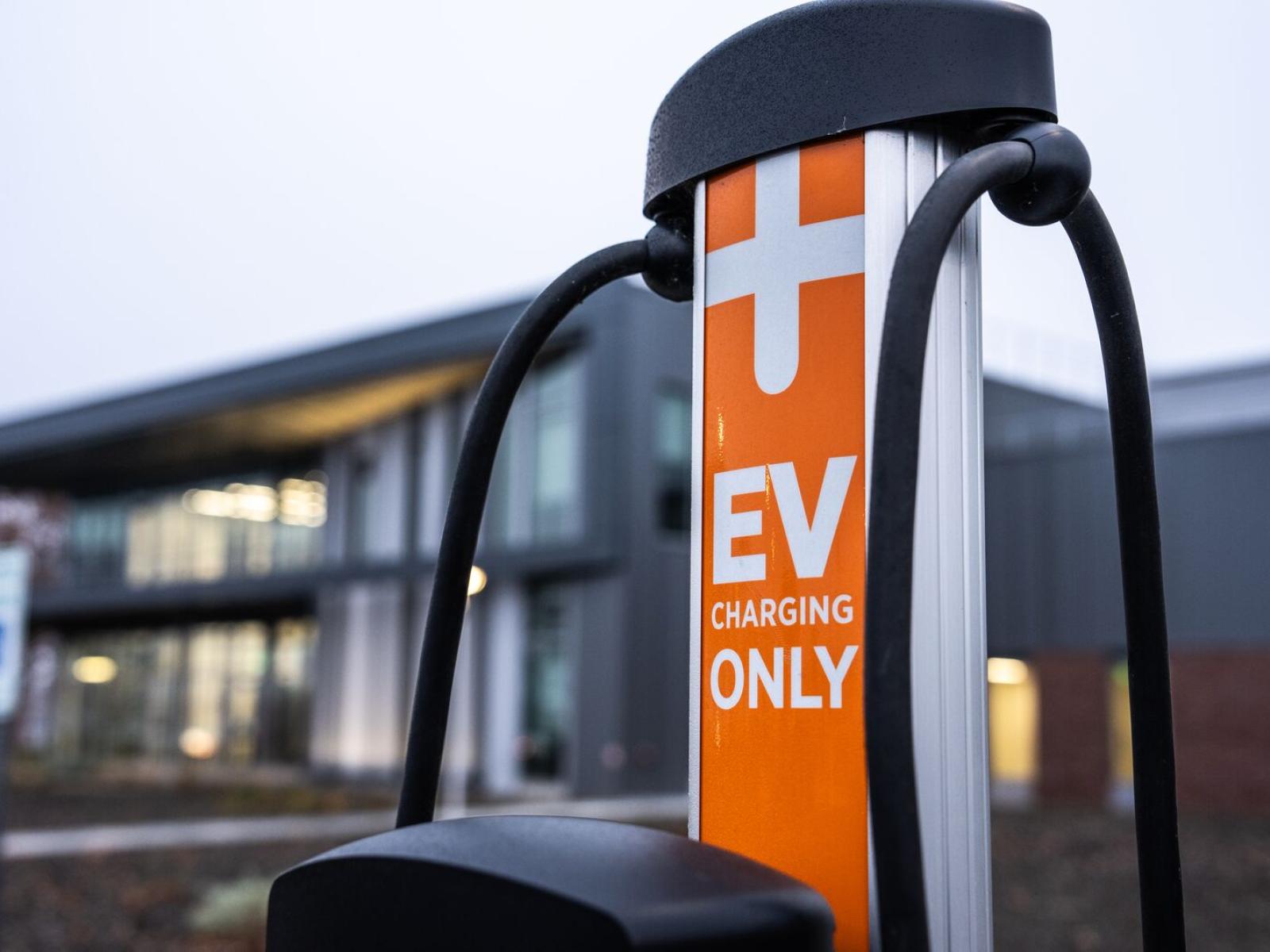How the Grid Storage Launchpad is Accelerating EV Research
New facility puts Lab's vehicle battery work in the fast lane

The Grid Storage Launchpad is the new headquarters for vehicle battery research at PNNL.
(Photo by Andrea Starr | Pacific Northwest National Laboratory)
In August 2024, Pacific Northwest National Laboratory (PNNL) inaugurated the Grid Storage Launchpad (GSL): a new, 93,000-square foot facility that will advance the future of energy storage across the entire research pipeline, from fundamental research to industrial-scale testing.
But despite the name, GSL isn’t dedicated solely to energy storage for grid applications—it also houses PNNL’s vehicle battery research programs, which now have more lab space and a slew of new capabilities.
A one-stop shop for EV battery projects
For the Lab’s vehicle battery researchers, the agglomeration of their laboratories in GSL is a big deal. Previously, the research cycle included five labs across PNNL’s campus—battery materials might be produced in one building, prototype batteries created in another building, tests conducted in a third building.
Now? Everything is in GSL.
That’s a big improvement for vehicle battery research at PNNL, which spans a wide range of high-impact projects, including leadership of both the Battery500 Consortium and the newly formed Cathode-Electrolyte Interphase Consortium.
“Having all our equipment and people in the same building will foster the conversations and collaborations that are necessary to tackle these complex challenges," said Darrell Herling, program manager for PNNL’s transportation materials and manufacturing portfolios.
New tools and spaces
GSL’s new transmission electron microscope will allow researchers to examine battery materials before and after their charge-discharge cycles, helping them understand how the materials perform at an atomic level. Meanwhile, the Automated Robotics for Energy Storage (ARES) Lab has moved to GSL, where it uses AI-guided robotics to dramatically accelerate the rate and precision of battery chemistry experimentation.
Dry rooms, which allow researchers to test sensitive materials under controlled temperatures and humidity levels, are critical to producing and testing prototypes for battery research. Previously, PNNL’s battery researchers had access to only one dry room, which housed a production line for pouch cell prototypes. Pouch cells are mid-sized batteries similar to those found in power tools, and collections of pouch cells can also be found powering many EVs.
GSL adds two more dry rooms: the pouch cell line will move to the smaller of the two, while the larger will house the new prismatic cell line.
Prismatic cells
PNNL’s pouch cell line has produced prototypes that push the boundary of new materials’ performance capabilities. Now, with the launch of GSL, PNNL’s researchers can create another, larger type of battery: prismatic cells.
An individual prismatic cell can power a substantial machine—such as an e-bike—and, like pouch cells, groups of prismatic cells can be used to power an electric vehicle.

These larger and more powerful cells also present new opportunities for energy storage research at PNNL: prismatic cells are well-suited for heavy-duty uses like large electric trucks and grid energy storage. The Lab’s researchers are excited to explore the possibilities of prismatic cells for both vehicle and grid applications.
“We will be the only National Laboratory under the Department of Energy that can make prismatic cell batteries,” explained Cassidy Anderson, a materials scientist at PNNL. “We plan on testing a couple new chemistries in that format, including both lithium- and sodium-type chemistries.”
A new day for vehicle battery research at PNNL
Since the ribbon-cutting, researchers have been hard at work in their new lab spaces. For some, that means setting up and testing their new equipment; for others, it means continuing their research in bigger, newer labs.
“From materials to manufacturing, PNNL is a proven leader in EV battery research,” Herling said. “Our new home in GSL accelerates battery innovation with its expanded space, cutting-edge tools, and collaborative environment, helping us to meet the nation’s transportation needs faster.”
GSL was funded by the Department of Energy Office of Electricity, with additional funding from the state of Washington, Battelle, and PNNL. Many vehicle battery projects within GSL are supported by funding from additional offices, including the Vehicle Technologies Office and the Advanced Materials and Manufacturing Technologies Office.
Published: December 13, 2024